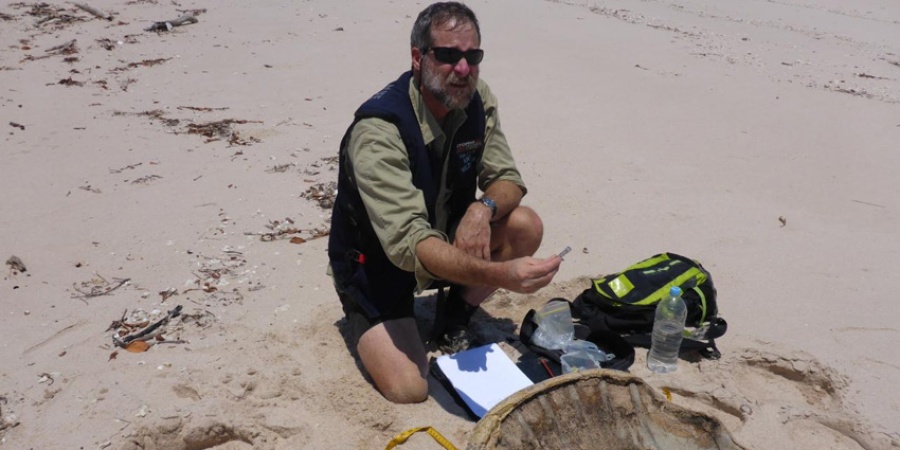How flatback turtle skeletons can help save the living
Researchers from the Department of Biodiversity, Conservation and Attractions (DBCA) and partners have been working to discover how flatback turtle skeletons can reveal more about the lives of Australia’s iconic turtle species.

Researchers from the Department of Biodiversity, Conservation and Attractions (DBCA) and partners have been working to discover how flatback turtle skeletons can reveal more about the lives of Australia’s iconic turtle species.
The study, a joint project led from the USA by The Ocean Foundation and US National Oceanic and Atmospheric Administration (NOAA) Fisheries with support from local groups across northern Australia, is shedding new light on the growth rates and age at maturity for flatback turtles.
This information helps researchers and managers better understand the population status and trends, in turn focusing management efforts to conserve this threatened species.
Flatback turtles are the least understood of the seven sea turtle species and the only one to be labelled ‘Data Deficient’ on the International Union for the Conservation of Nature’s (IUCN) ‘Red List’. In Western Australia, flatback turtles are threatened fauna, classified as ‘Vulnerable’.
DBCA Senior Research Scientist Dr Tony Tucker said the study was integral for managing and conserving flatback turtle populations.
“While this provides data on the size of mature female turtles, we haven’t had a good handle on their age at sexual maturity and how that corresponds to size until now.”
“The insightful outcomes of this project will be combined with field data, and then used to model the function of the flatback turtle populations and try to predict the impacts of changing climate and other threats,” Dr Tucker said.
Researchers compiled age and length data by studying the bones of deceased flatback turtles that had washed ashore or been caught in fishing nets.
“Just like tree rings, sea turtle bones have been demonstrated to have concentric rings of growth throughout their life,” Dr Tucker said.
“We’ve applied this technique for the first time on flatback turtles using specimens that have washed ashore and even from museum collections.”
Scientists recorded the carapace (shell) length, then identified and measured growth rings inside the humerus (arm) bones to create a multi-year record of size and age for individual turtles. Some flatback turtles had previously been marked by researchers at nesting sites, providing supporting information on known growth rates.
The more than 70 specimens collected from across northern Australia have revealed flatbacks grow rapidly as juveniles and reach sexual maturity at an estimated 16 years of age. The oldest flatback turtle recorded as part of this study was around 48 years old.
“This research suggests juvenile flatback turtles grow faster than any other sea turtle species,” Dr Tucker said.
“Unlike other sea turtles, juvenile flatbacks don’t head for the deep ocean for protection but instead remain in relatively shallow waters to feed. This rapid growth may aid their protection from predators such as sharks, fish and birds of prey.”
Project lead Dr Cali Turner Tomaszewicz from The Ocean Foundation and NOAA Fisheries said the study is a crucial first step in understanding how breeding groups differ across northern Australia.
“We know nesting flatbacks in eastern Australia tend to be larger than those nesting in Western Australia, so we would like to continue collecting samples to see if those size difference also mean differences in age to maturity,” Dr Turner Tomaszewicz said.
“We also plan to look at the chemical signatures in the bone growth layers to see if we can detect differences in diet between different groups of flatbacks, or between juvenile and adult turtles. It’s an exciting project to be a part of.”
This new information will inform ongoing monitoring and research within the only identified and accessible flatback turtle foraging ground located at Roebuck Bay, Western Australia, which will be undertaken by Yawuru Country Managers and DBCA scientists.
The study was published in the journal PLOS ONE on the 20 July 2022 (https://doi.org/10.1371/journal.pone.0271048) and was a joint project involving The Ocean Foundation, US National Oceanic and Atmospheric Administration, Western Australian Department of Biodiversity, Conservation and Attractions, Queensland Department of Environment and Science, Charles Darwin University and Pendoley Environmental.
Article Date